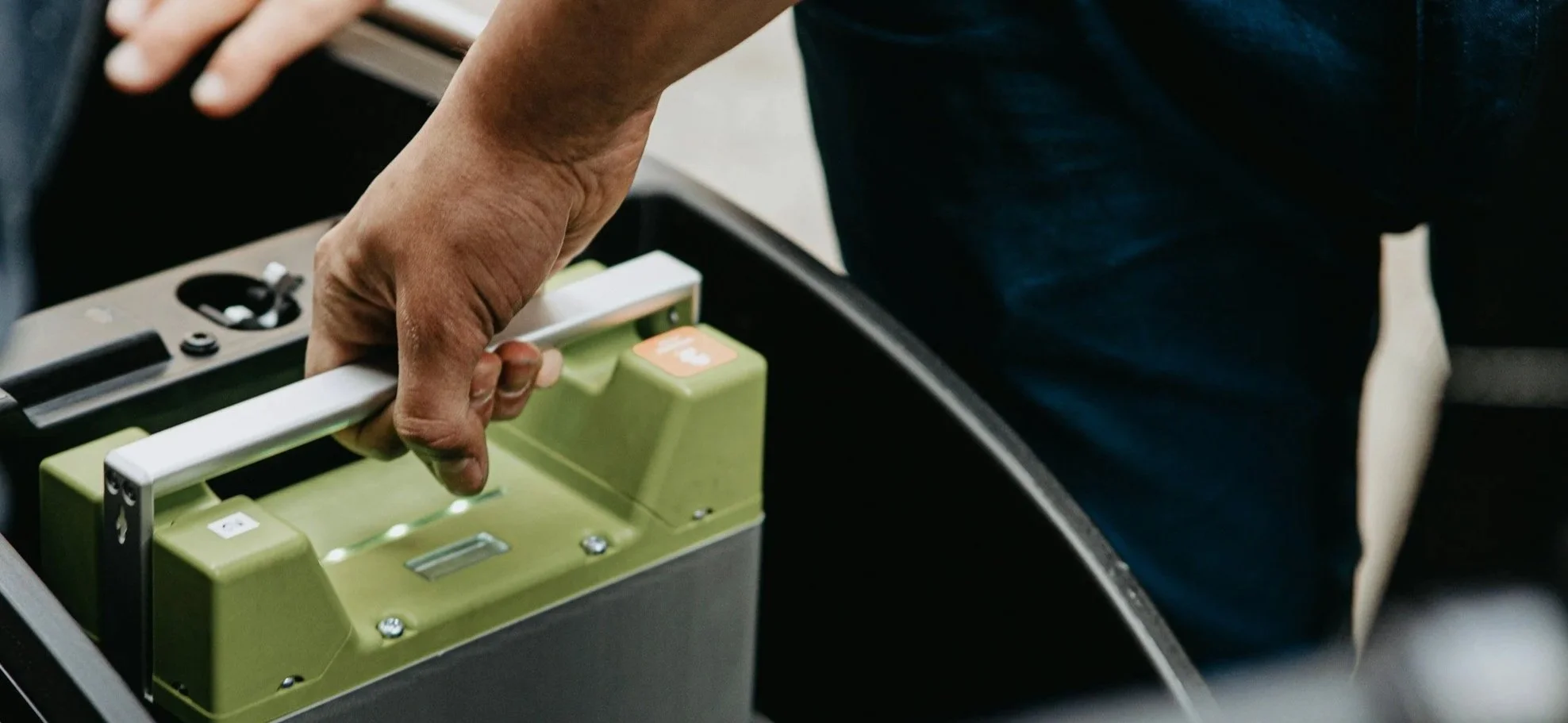
Reit EV
2019 - 2021
Purpose
When we started ReitEV, our aim was simple but ambitious: to tackle the four barriers that had kept electric motorbikes from taking off in Southeast Asia — high upfront cost, short range, slow charging, and lack of infrastructure. Motorbikes were everywhere — over 200 million across the region, accounting for 80% of vehicles on the road — yet electrification remained stagnant. Each rider who switched could cut their CO₂ footprint by about 80%, and if scaled regionally it could reduce global emissions by roughly 1%. The opportunity was obvious, but the old value chain wasn’t built to solve the problem.
We set out to build a model that made electric motorbikes not only possible, but preferable. By combining low-cost motorbike sales with battery swapping stations and subscription energy plans, we created a value proposition that undercut petrol both in upfront and running costs. Our purpose was always clear: to prove that sustainable transport could also be the more convenient, affordable, and desirable option for everyday riders.
Potential
From the outset, we knew the scale of the market. In Singapore alone there were about 100,000 motorbikes and an annual fuel spend of S$60M. Just across the border in Malaysia, 13M motorbikes consumed over S$2.1B in petrol annually. Across Southeast Asia, the total ballooned to 465M motorbikes and over S$200B spent on refueling every year. Every one of those riders represented a potential switch, and every dollar spent on petrol represented revenue that could flow into an electric alternative.
We also saw demand signals early. In a survey we ran, 66% of Singaporean riders said they were open to adopting an electric bike if cost and convenience concerns were addressed. Policy shifts and government incentives were gathering momentum. Electricity was consistently cheaper than petrol, and maintenance costs were lower. Our belief was that once we solved the charging problem and brought the upfront price below petrol equivalents, adoption would tip quickly. In short, the total addressable market was massive, consumer readiness was high, and the timing felt right.
Process
Our process was shaped by lean execution and strategic focus. On the product side, we built a full-stack system in-house: an electric motorbike, a battery swapping station, and the backend software to run it. We chose to monetize through energy subscriptions, not bike margins — a classic razor-and-blades model. Riders got a bike at close to cost, while we captured recurring revenue from mileage plans that guaranteed savings compared to petrol.
On the go-to-market side, we didn’t try to reach everyone at once. Instead, we targeted delivery riders and other high-mileage users, who stood to benefit most from lower running costs and instant swaps. This led to a breakthrough: ReitEV became the first e-motorbike listed on the Foodpanda Riders platform, exposing thousands of couriers to our bikes. Within ten days, 100 riders signed up, and 25 placed downpayments. At the same time, we were accepted into the Plug and Play Smart Cities Accelerator, which connected us with municipalities and corporates in Thailand, Indonesia, and the Philippines. By combining grassroots traction with institutional validation, we were able to demonstrate adoption potential on both ends of the spectrum.
Precaution
We always knew the risks. Infrastructure businesses require careful pacing — profitability in Singapore would only come once we had around 1,500 bikes supported by 19 swap stations. Rather than overbuilding, we took a phased rollout approach, securing placements for stations in existing motorbike parking lots and commercial buildings. This avoided heavy land costs and kept utilization high.
We also anticipated competitive and regulatory challenges. Riders needed time to adjust from “refueling” to “swapping.” Government approvals could slow down certification. Larger international players like Gogoro and Sun Mobility validated the model, but also underscored the potential competition. Our response was to build proprietary station technology, keep operations lean and capital-light, and move quickly as a first mover in Singapore. These precautions allowed us to grow without overextending, and gave us resilience when shocks came.
Performance
Looking back, I am proud of what we achieved in a short span. In just six months, we completed hardware, electronics, firmware, and software integration — building a functioning battery swapping station, an electric bike, and the digital backend to support them. This was half the time and a fraction of the cost of what most hardware startups take to reach the same milestone. It proved our technical capability and our ability to execute with discipline.
On the commercial side, the Foodpanda rider partnership validated demand — 100 leads and 25 downpayments in 10 days was strong evidence of product-market fit. Our selection into the Plug and Play Smart Cities programme gave us regional credibility and opened doors to pilot opportunities, including a trial in Indonesia, the world’s third-largest motorbike market with over 125 million bikes. COVID-19 disrupted execution and ultimately dried up fundraising, forcing us to slow down. At that point, I made the decision to hand day-to-day leadership to my co-founder and remain as an advisor. It was not easy, but it kept the venture alive, preserved our partnerships, and allowed the mission to continue.
While my founder’s guilt is real, I view ReitEV as a success. We achieved in 18 months what many deep-tech mobility startups fail to do in years: rapid system integration, proven customer demand, international recognition, and regional pilot commitments. More importantly, we showed that a small, determined team could tackle a massive problem with speed, creativity, and resilience.